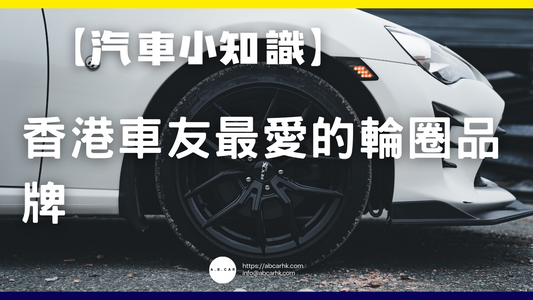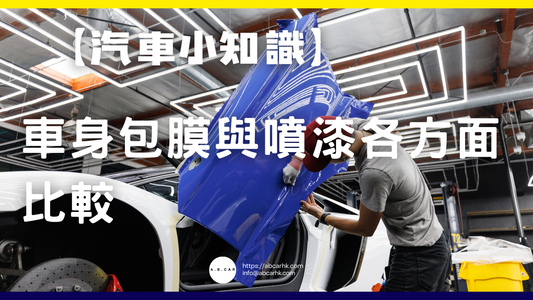[Road Trivia] Why do most parking lots in Hong Kong have height restrictions?

🚗 Editor's super detailed revelation: Why do most parking lots in Hong Kong have height restrictions?
Have you ever driven into a parking lot and looked up to see a giant "Height Restriction" sign? Perhaps it read "Height Limit 2.1m," "Height Limit 1.9m," or even "Height Limit 1.8m"? Some vans, SUVs, seven-seaters, and even modified cars are afraid to enter, fearing a head-on collision. So, why do nearly every parking lot in Hong Kong have height restrictions? Does it create difficulties for drivers of larger vehicles? Is there a way to change it? Today, we'll provide you with a comprehensive and in-depth analysis!
1. What is the "parking lot height limit"?
The so-called "height restriction" refers to the maximum permitted vehicle height, usually indicated by a beam or sign at the entrance of a parking lot . If your vehicle exceeds this height, you are not allowed to enter, otherwise you may hit the ceiling!
- Common height restrictions (based on the current situation in Hong Kong): 1.8 meters, 1.9 meters, 2.0 meters, 2.1 meters, and some commercial vehicle parking lots can reach 2.5 meters or above.
- In addition to the entrance height restrictions, some parking lots will also have "Reminder" signs at certain low points inside.
2. Main reasons for height restrictions on car parks in Hong Kong
1. Hong Kong has a large population and limited land, so building space is at a premium.
- Land supply in Hong Kong is extremely limited, and most car parks are built underground (basements), on the ground floor of shopping malls, or in residential or office buildings .
- When designing a basement parking lot, space must be left for the building foundation, pipelines, fire protection facilities, feng shui engineering, ceiling partitions, etc.
- Higher ceiling heights increase construction costs and reduce the number of available parking spaces . If all floors were designed to be 2.7 metres (to accommodate coaches and trucks), there would be fewer floors or parking spaces, which is not in line with Hong Kong's land-constrained realities.
2. Safety considerations to prevent accidents involving "hitting the ceiling"
- Marking the height limit can ensure that vehicles entering the venue will not hit the ceiling, lighting, pipes, fire protection systems and other facilities due to being too high .
- There have been news reports about drivers ignoring height restrictions and forcing their way into parking lots, resulting in vehicles getting stuck or even having their roofs peeled off, causing safety issues and damage to the parking lot.
3. Building regulations and fire regulations
- Hong Kong's Buildings Ordinance provides clear guidelines for parking lot design, including requirements for ventilation, smoke exhaust, escape, and structural height .
- Some fire-fighting equipment and exhaust systems need to be installed on the roof, further lowering the practical height of the floor.
4. Design standards are based on "mainstream private cars"
- According to the standards of the Transport Department and the Architectural Services Department, the height of an average private car is about 1.5-1.8 meters (SUV/MPV is higher), so most car parks only need to accommodate mainstream models.
- Trucks, tourist buses and other super-high vehicles usually have exclusive ground parking lots or specially designed high-rise parking lots because of their smaller proportion.
5. Historical reasons for old buildings
- Hong Kong has a large number of old shopping malls, residential buildings and industrial buildings. When they were built, private cars were generally thinner and shorter. When they were designed, it was not anticipated that SUVs and MPVs would become popular , so they are particularly short.
- The height limit for new facilities will be gradually raised, but there are restrictions on the addition and renovation of old buildings, making it difficult to make comprehensive improvements.
3. Impacts of Common "Height Restrictions"
1. Large vehicles are difficult to park
- SUVs, MPVs, seven-seater cars, modified cars, vans, large imported foreign vehicles, etc. may exceed the height limit and are often turned away .
- Some parents bought seven-seater cars to pick up their children, but found that the height restrictions in the housing estate car parks were insufficient, making parking a problem.
2. Inconvenience in freight, handling and logistics
- In some shopping malls, residential buildings, and office buildings, delivery trucks can only park on the ground or on the roadside and are not allowed in basements, which increases the risk of illegal parking.
3. Consumers are highly selective when choosing a car
- Before buying a car, you should check the height restrictions of your housing estate or company parking lot. Otherwise, it would be embarrassing if you bought a car and couldn't fit it into your own home parking lot .
4. Why not just set all the settings higher?
1. Construction cost issues
- The higher the floor height, the higher the construction costs, fire protection, ventilation, sound insulation and structural costs will be, which is not cost-effective for developers.
2. Low space utilization
- As the floor height increases, the overall number of available parking spaces decreases, affecting revenue.
3. Urban planning restrictions
- Many new and old buildings in Hong Kong are subject to restrictions such as planned height, exterior walls, foundations, and underground pipes, so they cannot be changed at will.
4. Limited demand
- Compared with private cars, the proportion of super-high vehicles has always been small , and the social cost is "not proportional" to actual demand.
5. Special Example: Are there any venues with no height restrictions or with higher height restrictions?
-
Ground open-air parking lots usually have higher height restrictions or even no height restrictions, making them suitable for trucks, tourist buses, and special vehicles.
-
Professional truck parking lot and logistics center <br>Designed for large trucks, the floor height is usually more than 2.5 meters.
-
Some newly completed shopping malls and Grade A office buildings have taken high-body vehicle design into consideration, and the height limits will be marked as 2.2 meters and 2.3 meters to accommodate large MPVs and SUVs.
6. Editor’s Tip: How to avoid hitting the height limit?
- Check the height restrictions of your residential complex/company/common parking lot before buying a car
- Pay attention to the height restriction signs when parking and do not force your way in.
- When installing roof boxes, roof racks, bicycle racks, etc., remember to add the total height to the calculation.
- If in doubt, get out of your car and measure it or ask the parking staff.
- Truck, MPV, and SUV drivers should have a "height restriction map" as a backup.
7. Common Myths and Misunderstandings
1. "Is the height restriction intended to make things difficult for large vehicles?"
No, the main reasons are safety, building space and economic benefits.
2. "Can I remove the roof rack to put it in?"
Be careful! Some frames are difficult to remove, so don't risk losing more than you gain.
3. Is the height restriction a rigid recommendation?
In most cases, it is mandatory and you cannot enter the market at an excessively high price, otherwise you may be held accountable.
8. Summary
Most car parks in Hong Kong have height restrictions, primarily due to land scarcity, architectural design, economic efficiency, safety regulations, and historical factors . Height restrictions are not imposed to make things difficult for drivers, but rather for safety and to maximize space efficiency.
Before buying a car or parking, remember to pay attention to height restrictions to avoid embarrassing situations like "not being able to fit into the house" or "hitting the ceiling"!
If you have any other questions about parking, height restrictions, car buying and choosing, and parking trivia, feel free to leave a message and ask us! We'll debunk more urban parking myths with you next time! 🚗🚦



